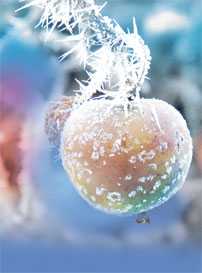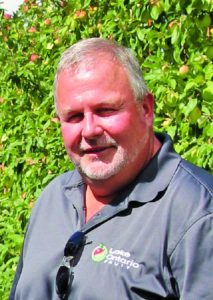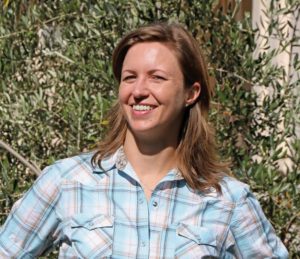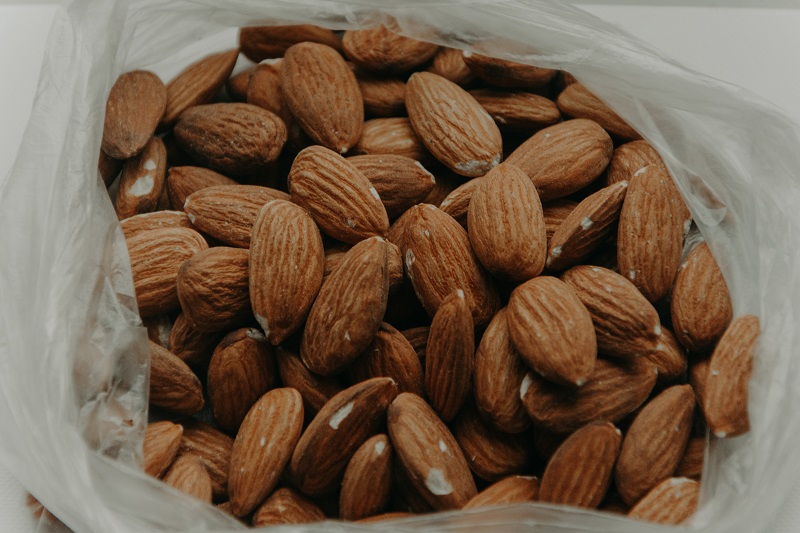Climate Change: What’s Your Plan?
Considering its importance, the “Secure Water Act Report,” released a few months ago by the U.S. Department of the Interior’s Bureau of Reclamation, received little notice. This despite the fact it projects temperatures in the West to rise by 5°F to 7°F by the end of the century.
That’s an awful lot, especially when you consider nearly all scientists are alarmed by the fact that atmospheric carbon dioxide levels increased from 280 parts per million in the late 1700s to today’s level of about 400 ppm. This “Greenhouse Effect” has raised average global temperatures by about 0.8°C since 1900. That equates to about 1.5°F, or about one-fourth of the average change predicted for the West in the coming 84 years.
The report also projects a decrease for almost all of the April 1 snowpack, a standard benchmark measurement used to project river basin runoff, and a 7% to 27% decrease in April to July stream flow in several river basins, including the Colorado, the Rio Grande, and the San Joaquin.
“One of the greatest challenges we face is dealing with the impacts of climate change on our nation’s water, which is really the lifeblood of our economy,” Interior’s Deputy Secretary Michael Connor said upon the report’s release. “We need to continue to develop collaborative strategies across each river basin to ensure our nation’s water supplies, agricultural activities, ecosystems, and other resources all have sustainable paths forward.”
East Sees Wild Fluctuations
But global warming is clearly not a problem limited to the West. What fruit grower can forget the late winter/early spring of 2012, when it was so  warm that many apple trees across the Midwest and Northeast bloomed about a month early, only to be hit with normal to subnormal temperatures in April? Michigan’s crop was nearly wiped out, and other states sustained huge losses.
warm that many apple trees across the Midwest and Northeast bloomed about a month early, only to be hit with normal to subnormal temperatures in April? Michigan’s crop was nearly wiped out, and other states sustained huge losses.
More recently, this year’s New England peach crop was erased by the “Valentine’s Day Massacre,” when temperatures dipped well below zero.
USDA’s William Graham was recently quoted as saying he visited one orchard with 14 acres of peaches where the grower had counted at total of four blossoms. “I can’t remember the last time we experienced such a complete loss of an entire crop,” Graham said.
Get Smart
To address these issues, Cornell University has launched the Climate Smart Farming program, a voluntary initiative designed to help growers in not just New York but the Northeast at large.
The program aims to increase agricultural productivity and sustainability, reduce greenhouse gas emissions from agricultural production, and increase farm resiliency to extreme weather and climate variability through adoption of best management practices for climate change adaptation.
It’s ambitious, with research and Extension specialists helping growers institute best management practices including cropping systems, IPM, land-use planning, and water resource management.
A big part of the effort will be in upgrading infrastructure, such as cooling, irrigation, drainage, and waste management systems for increased resiliency. They also seek to increase farm energy efficiency and install renewable energy systems on the farm, which can contribute to cost savings.
Eye-Opening Video
The Climate Smart Farming website has an interesting video on climate change featuring three Empire State apple growers. One is David Coene, Windmill Farms, Ontario, NY.
“I’ve lived here now for 44 years and it certainly appears to me that we are seeing more extremes in our weather,” he says. “In the past five years, we’ve seen major hailstorms and a major freeze event that, to us, shows climate change is happening to some extent.”
Coene advises his fellow apple growers to purchase crop insurance.
Todd Furber, of Cherry Lawn Farms in Sodus, NY, a fourth generation grower, says wind machines have been working during some hard freezes, in one case raising the temperature from -12°F to -7°F.
“That can be the difference between saving your fruit and not,” he says. “[It’s] the cost of doing business today – you can’t afford not to have a crop. You have to do things to protect yourself.”
Before the freeze of 2012, when growers not close enough to Lake Ontario to enjoy the lake effect lost an average of half their crop, there were only two wind machines in the region. Now there are more than 30, at an average cost of $35,000.

Rod Farrow, Lamont Fruit Farms
Rod Farrow, of Lamont Fruit Farms in Waterport, NY, is a British native and since moving to the U.S. in 1986 says he’s been surprised how much earlier the seasons have come.
“We’ve certainly moved our bloom time forward probably at least five to seven days and in some years a lot more than that,” he says. “How much of this we can attribute to climate change is still a little bit debatable to me, personally, but there certainly is the sense that things are here and the climate is getting a little more unpredictable.”
On the bright side, the apple-growing business has been generally healthy, Farrow says, allowing many growers to invest in risk management, whether in wind machines or purchasing insurance. But perhaps the best investment is to be careful where you plant.
“Anywhere we have reasonable sites or good orchard sites, we’ve survived any frost that we’ve ever had, including 2012,” he says. “We look at it as a company strategy, that investing in the highest possible fruit sites or orchard sites has just as big if not a greater economic impact than trying to mitigate a site that’s going to be at risk in years when it’s cold.”
Not All Bad News
Growers shouldn’t lose sight of the fact that not all aspects of climate change are negative, Farrow says, noting that increasing the number of heat units per season can boost fruit size, potential yield, return bloom, and general tree health.
“So there is always gains and balances with anything,” he says. “We certainly have a little bit higher risk, but we also possibly have a slightly higher potential in terms of yield and value.”
Indeed, a study released in March by University of Idaho (UI) researchers predicts the annual coldest temperature will climb in coming years, as will overall average winter temperatures. This will result in a widespread change in U.S. hardiness zones in response, says Lauren Parker, a doctoral candidate in geography in UI’s College of Science and the study’s lead author.
“When farmers are thinking about their long-term planting and management strategies, this would be something to keep in mind,” Parker says. “Our projections are for mid-century, so if you’re a young farmer just starting out, by the time you’re passing your farm along to the next generation, if not before, you may be seeing some of these changes.”
Warming of the annual coldest temperatures could allow for an expansion of areas suitable for growing high-value tree crops, such as almonds and oranges, that are currently limited by cold winter temperatures.
“Cold hardiness zones are linked to broader temperature patterns, and the warming of cold extremes and average minimum temperatures could mean new opportunities for growers,” she says.
Nuts To That
Of course, as might be expected, many researchers don’t share Parker’s optimism that warm-weather crops will be grown in entirely new hardiness zones any time soon. For example, Katherine Pope, a University of California Cooperative Extension (UCCE) Orchard Systems Advisor, says she is familiar with the UI study. Pope, who is a tree nut expert in Yolo County, just north of Sacramento, was asked about the possibility of growing almonds someday in Idaho because of climate change.

Katherine Pope, UCCE
“I’m not buying land up there,” she said. “I’ll tell you that.”
Pope has more immediate matters of concern, but she noted, “More and more, growers are saying ‘The weather sure isn’t like it used to be.’”
For example, this past winter was fine in terms of precipitation and chilling hours, but the two previous winters were really challenging. Even if a grower did have a reliable source of water, there’s no substitute for adequate chilling hours.
Sure, the drought is a problem. But Pope says that among her growers “there is a sense that water limitations will be driven more by the regulatory environment than the physical environment.”
If there are crop changes because of a lack of water – whether from regulators or a change in climate – she believes growers will get out of walnuts and plant more almonds and pistachios, as they are more drought-tolerant.
Like many other UC researchers, rather than new varieties she’s looking for rootstock options that can tolerate less water.
Also, she notes while almonds have come under fire from urbanites for intensive water use, often unfairly, they would still be the likely crop of choice.
“If water gets more expensive,” she says, “you need to grow high-value crops to pay for that water.”
Beating The Heat
About 300 miles south of Pope’s home base is Kern County, where fellow UCCE Farm Advisor Ashraf El-Kereamy advises growers and conducts research in an area known for producing many of the nation’s table grapes. While both researchers work in California, their key problems could not be more different.

Ashraf El-Kereamy, UCCE
While Pope is primarily concerned with rising temperatures in the winter, El-Kereamy is focusing on the dog days of summer. Table grapes are grown in the area because they thrive in the heat – the nation’s other large table grape region is located even farther south, in the Coachella Valley – but there can be too much of a good thing.
The maximum temperature for growth and development of a grapevine is 95°F. Beyond this temperature, the metabolic processes can start to decline, affecting vine growth and fruit quality. Unfortunately, temperatures in the region, indeed through much of the San Joaquin and Sacramento valleys, have hit the triple digits frequently in recent years, with Bakersfield often the hottest of all.
Excessive heat can cause a host of problems, such as shatter at bloom. After fruit set it may reduce fruit size and increase cracking and scarring, and during ripening can inhibit both coloring and sugar accumulation.
“In the long term, we need more varieties adaptable to the warmer climate,” he says. “We’re naturally selecting varieties that are more adaptive to the heat and more productive.”
For example, ‘Crimson Seedless,’ long an industry mainstay, has been having problems getting adequate color in the recent hot summers, because there haven’t been many cool nights. “Tough variety to replace,” he says, “because it’s late season.”
Another problem is that with increasing heat comes increasing water stress, which, for the reasons above, must be avoided to grow a nice crop of table grapes.
“What I tell them is we need to build a good vine, and a good canopy, before the heat moves in,” he says. “Be ready for it, because good canopy structure means minimal damage.”
There are other more minor changes he recommends in cultural practices as well. For example, traditionally the leaves are removed from around the grape clusters to improve quality and yield.
“But now we need to manage the canopy carefully because the intense sunlight can damage grape clusters,” he says. “You need to keep a closer eye than ever on the weather.”
Another problem is that table grapes take more water than winegrapes, which are often intentionally stressed because the smaller berries can have more intense color and flavor. But consumers don’t want tiny table grapes.
“Lowering water use in table grapes is very hard, but different rootstocks may be used for that purpose, as it might be more related to the rootstock than the variety,” El-Kereamy says. “A six-degree increase over 100 years is a lot, but I’m sure given that amount of time we will be able to adapt our rootstocks and varieties.” ●









